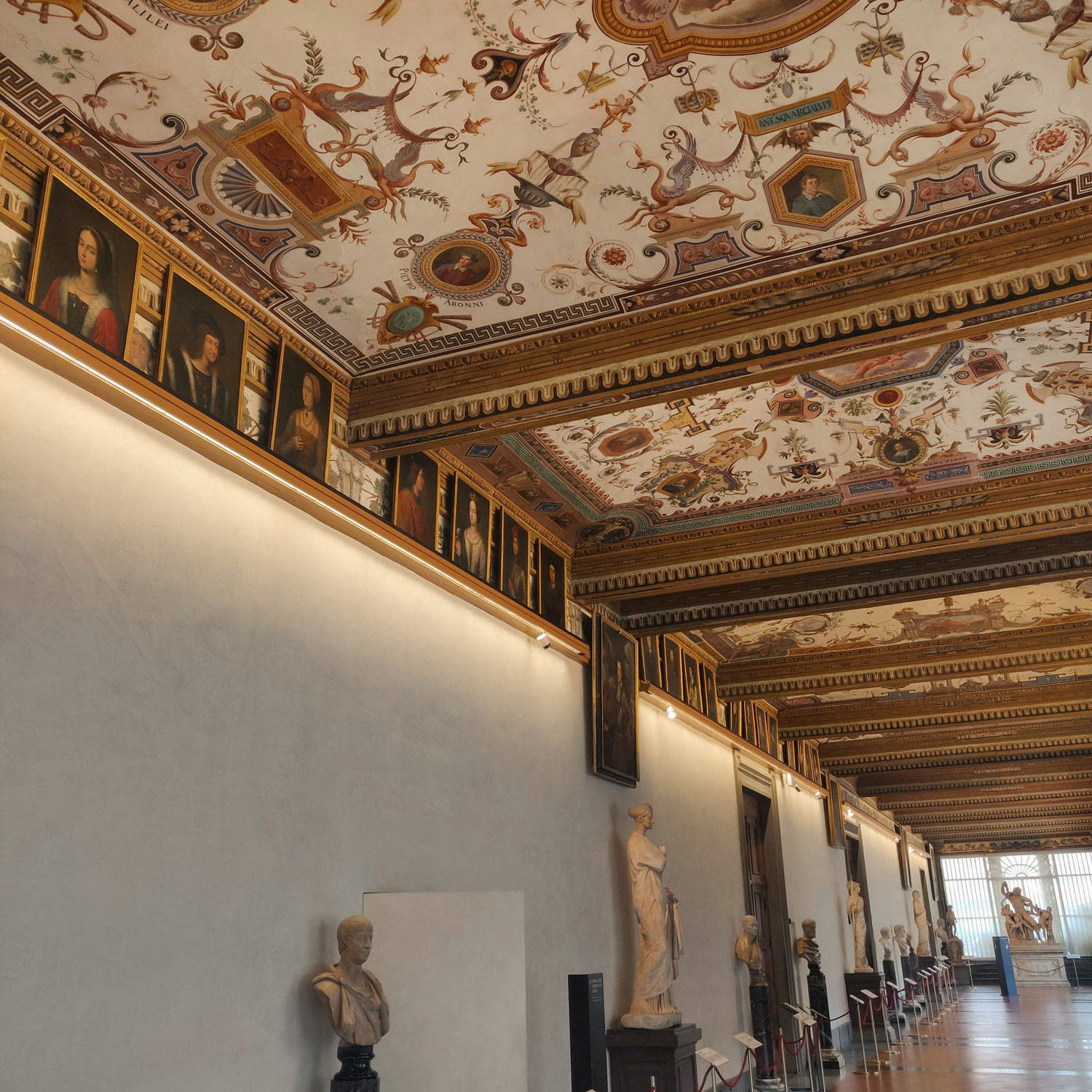A 16th-century Portrait of Romulus that had been lost for centuries resurfaces at the Pitti Palace. It is a work made in the middle of the century by Cristofano dell’Altissimo (Florence, 1525 - 1605), the author of the nearly 300 copies of the portraits of the Illustrious Men in Paolo Giovio’s collection, commissioned by Duke Cosimo I, who in 1552 sent a very young Cristofano to Como, where Giovio’s collection was located, so that he could copy it: it is thought that the rediscovered portrait of Romulus also belongs to this series. The discovery was possible thanks to the research work of Alberica Barbolani di Montauto and Maria Matilde Simari, art historians who have long investigated among the archives of Florentine museums.
Romulus is imagined as a man with an olive complexion, a pronounced nose, a full beard and belted with laurel, while wearing a fur coat. “We made this discovery as part of a systematic reconnaissance of all the portraits in our collection that is part of a study of the Jovian collection,” said Uffizi Director Eike Schmidt. “The results of this survey will become a book that will be published in the coming months.”
This is not, in fact, a discovery that happened by chance, but is part of a research project on the so-called “gioviane,” that is, the plates by Cristofano dell’Altissimo that take up the portraits in Paolo Giovio’s collection (and that are currently located in the corridors of the Uffizi, one next to the other): thanks to the historical-documentary research, moreover, two other portraits found in the attic of Palazzo Pitti, thought to have been lost for almost five hundred years, those of Sulla and Henry VIII as a young man, have also been identified. Until now, these panels had not been recognized as Jovian and were attributed to an unknown 16th-century author. It was possible to assign them to Cristofano dell’Altissimo thanks to a study of the style that was then related to archival documents. “It is no coincidence,” Schmidt said, “that in the Grand Duke’s correspondence with the young artist who, in the epistles is called a pittorello because of his young age, Cosimo refers to Silla by mixing Latin with contemporary Florentine and calling the Roman military man Silla dittator for quite a while.”
The paintings are in a less than optimal state of preservation, so they will now be restored and displayed along with the other youngsters. “In particular,” Schmidt said, “Romulus and Sulla, being the oldest figures, will occupy the first positions in the collection, along with the Persian king Artaxerxes.” The re-emergence of the Romulus portrait is of particular value because the Uffizi is focusing heavily on enhancing the value of its ancient heritage. “We are working on creating a corridor of classical bas-reliefs to accompany the sixteenth-century rooms to make clear how indebted sixteenth-century painting is to Roman models,” the director concludes. “And for the future, the placement of ancient statuary on the ground floor is planned: the beginning of the museum tour once the construction site of the new Uffizi is completed in 2024.”
In the images below: the portrait of Romulus, the portrait of Sulla, and the layout of the Jovian statuary.
 |
 |
 |
 |
| Uffizi, new discoveries on Jovian plates: here are portraits of Romulus and Sulla |
Warning: the translation into English of the original Italian article was created using automatic tools. We undertake to review all articles, but we do not guarantee the total absence of inaccuracies in the translation due to the program. You can find the original by clicking on the ITA button. If you find any mistake,please contact us.